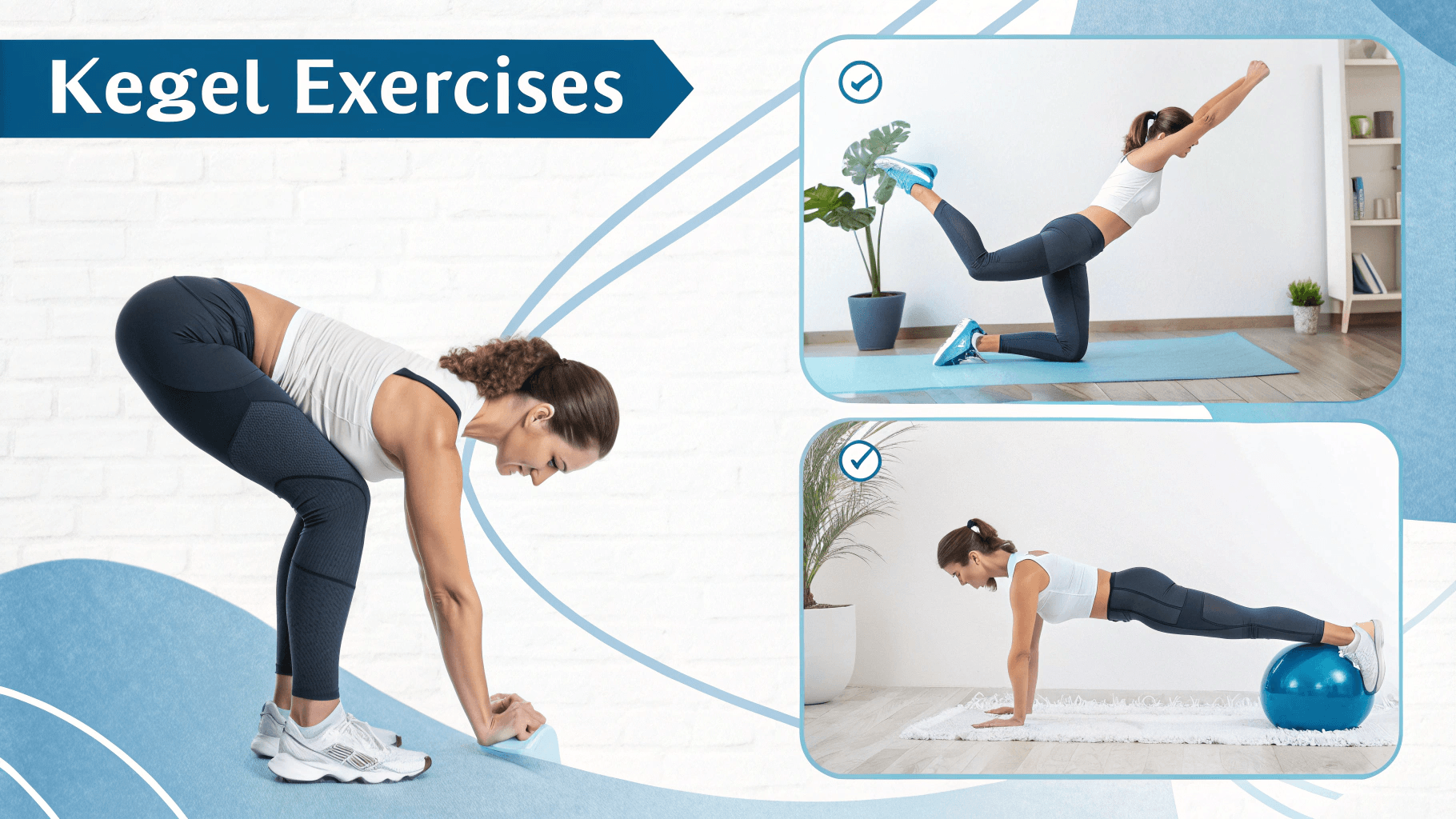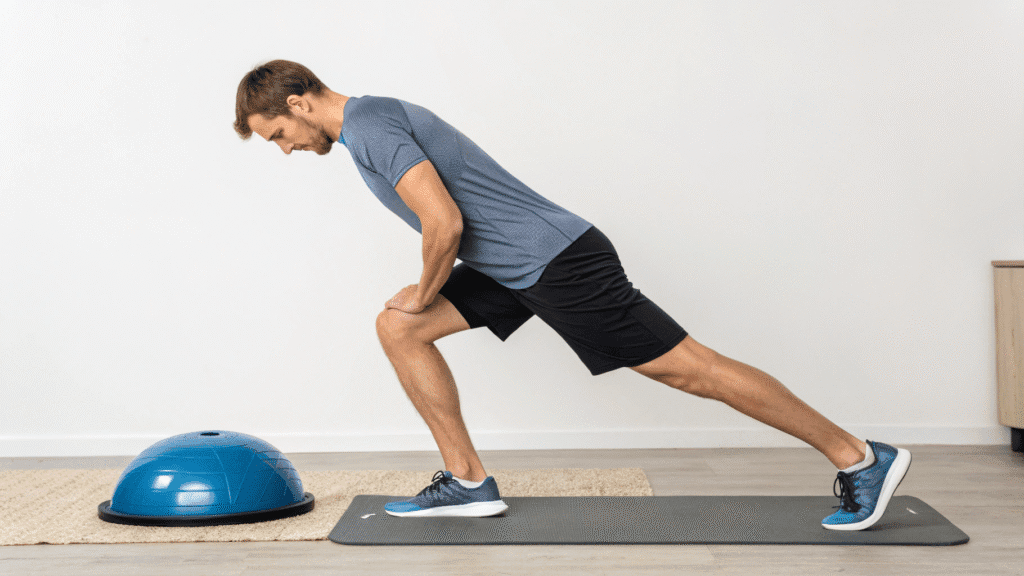Best Kegel Exerciser – Recommended after childbirth, menopause, or prostate issues, it strengthens pelvic floor muscles and supports recovery.

Kegel exercises are active exercises that involve contracting and relaxing the pelvic muscles. They are used to strengthen and maintain the perineum.
They are very effective in treating urinary and/or fecal incontinence, relieving prolapse problems, and improving sexual health and erectile function in men.
Best Kegel Exerciser : The origin of Kegel exercises
In the late 1940s, Dr. Arnold Kegel, an American gynecologist, studied the role of the pelvic floor muscles in continence and invented a perineometer, an instrument for measuring the strength of perineal contractions.
At the same time, he developed pelvic floor strengthening exercises that bear his name: the now famous “Kegel exercises.”
What do the exercises involve?
Kegel exercises are a series of contractions (and relaxations) of the pelvic floor muscles, located around the urinary and anal sphincters, in order to improve their tone.
These exercises generally offer excellent results when practiced regularly and have been shown to be effective in treating urinary leakage and incontinence, as well as prolapse, in both women and men.
Best Kegel Exerciser : What are Kegel exercises for?
-They strengthen weakened pelvic floor muscles.

-They improve urinary leakage and incontinence problems (stress, urge, mixed).
-They help control the urge to urinate.
-They help prevent organ prolapse.
-They improve intimate sensations during sexual intercourse.
-They improve erectile dysfunction in men.
Kegel exercises can be started when the first symptoms of a weakened pelvic floor appear. However, we now know that it is just as important to take care of your pelvic floor as a preventive measure, i.e., before problems arise.
How to do Kegel exercises correctly?
Locating the right muscles to work is one of the most important steps in Kegel exercises. To get started, don’t hesitate to seek advice from a healthcare professional (physical therapist, midwife, gynecologist, urologist, etc.) to correctly identify the different muscles to exercise.
You can then continue your training at home.
Be careful with “pee stops”!
One tip is to stop the flow of urine while urinating in order to locate the muscles involved. It is important not to get into the habit of doing this, as it can be counterproductive in the long run, leading to urinary tract infections and disrupting bladder function.
Best Kegel Exerciser : Kegel exercises for women
-Training to contract the right muscles:
First and foremost, it is essential to contract the muscles correctly during the series. To familiarize yourself with the practice, first train by following the steps below:
-Contract the muscles around the urethra as if to stop the flow of urine, then relax.
-Next, contract the muscles around the anus as if to stop passing stool or gas. Release.
-Then contract the muscles around the vagina as if you were trying to pull them inside. Release. If you can’t do this, insert a finger into your vagina and try to contract the muscles around it.
Feeling the muscles tighten around your finger indicates that you are contracting the right ones. Release.
Performing all three contractions at the same time constitutes a Kegel exercise. Now that you have mastered these contractions, let’s put them into practice!
–Practicing a series of Kegel exercises
-First, remember to empty your bladder before starting the exercises.
-Get into a comfortable position:
Sit with your back straight, feet and knees slightly apart, or lie down with your legs bent and slightly apart.
-Relax and focus on your pelvic floor muscles (the three contractions described above).
Do not contract your buttocks, abs, or thighs.
-Contract your muscles as if you were holding in urine, stool (or gas):
Hold for 5 seconds, then relax for 10 seconds.
Do not push outward; try to find the sensation of pulling your muscles inward toward your body.
Remember to breathe properly during the exercises.
-Repeat this movement (contraction and relaxation) 10 to 15 times. This constitutes 1 set of Kegel exercises.
-Repeat the set 3 to 4 times a day.
Practice gradually until you can contract for 10 seconds, then relax for 10 seconds. It may take a while to get there. Don’t worry, it all depends on the initial tone of your pelvic floor muscles.
Best Kegel Exerciser : Kegel exercises for men

–Practice before you start
First and foremost, it is important to locate and feel the right muscles to exercise. We recommend that you practice as follows:
-Contract the muscles at the base of the penis, imagining that you are shortening it and pulling it inside your body, then relax.
-Then squeeze as if to stop the flow of urine, and release.
-Next, tighten the muscles of the anus as if to prevent stool or gas from passing, and release.
The combination of these three contractions, done at the same time, constitutes a Kegel exercise. Once you have mastered these contractions, move on to the series of exercises.
Performing a series of Kegel exercises
-Empty your bladder completely before starting the exercises.
-Get into a comfortable position where you can feel your pelvic muscles working:
lying on your back or sitting with your legs slightly apart.
-Contract for a few seconds, combining the three contractions described above.
-Then relax.
-Repeat about ten times.
These exercises are very gentle and you may not feel the contractions much at first. If you look in a mirror, you should see your penis move and feel your scrotum lift gently toward the inside of your body.
-Start the series by contracting for 3 to 5 seconds, then relax for the same amount of time.
-Once you are comfortable with the method, try contracting more strongly. The goal is to contract for 10 seconds, 8 to 12 times in a row, almost every day. Remember to relax for the same amount of time between each contraction. Repeat the series 3 times a day.
For effective Kegel exercises
Kegel exercises are really very effective. Some people feel improvements within the first few weeks. However, it can take several months to regain good muscle tone.
Don’t get discouraged, be patient, and keep the following tips in mind:
-Practice every day: Kegel exercises need to be done daily, or at least regularly, to achieve real results.
-Relaxing is just as important as contracting, as are rest periods between sets. In fact, overtraining would be completely counterproductive for your pelvic floor muscles.
-Once you have mastered the exercises, you can do them anytime, anywhere, in complete discretion!
-Varying your positions (sitting, standing, squatting) and exercises will help you stick with your training.
Rapid contractions teach you to react quickly in order to control your muscles in case of leakage or stress incontinence when laughing, coughing, carrying a load, etc.
Slow, strong, sustained contractions strengthen the deep muscles that help support the organs and thus prevent prolapse.
-Continue throughout your life: if you stop doing Kegel exercises for too long, urinary problems may return.
Training with accessories?
Certain accessories such as connected probes (for women) or the BOOST external device (connected pad for men) help maintain motivation to continue practicing Kegel exercises.
Accessories such as fixed or variable weight Kegel balls, or vaginal cones (lighter than Kegel balls) help you to feel the muscles involved and make it easier to contract them.





